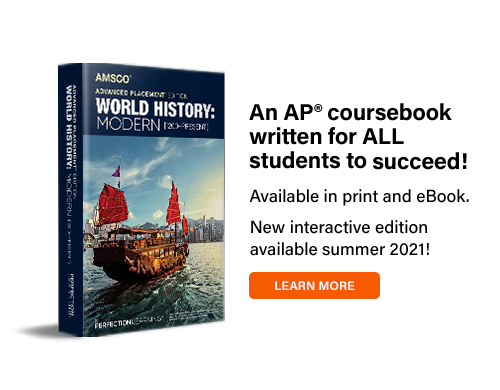As we get closer to the AP® World History Exam, students will begin to stress about the required essays they will write as part of the exam. The Document-Based Question essay is particularly challenging for students because they can struggle with reading and understanding the documents they are provided. In addition, planning and organizing the essay, let alone writing the essay, given the time constraints proves problematic for most student writers.
The essay rubric provides some direction but leaves a lot up to the interpretation of the reader. However, there is one clear objective for the student writer: make and support a valid argument. As an exam reader and table leader, it is my experience that students who can organize a well thought out argument using the documents as they were intended are rewarded with a score that is well above the national average.
With this objective in mind, I created the following PowerPoint that teachers can use to better understand the DBQ writing process. More importantly, teachers are free to use and modify this presentation so that their students can better understand the DBQ writing process. For sure there are many other sources for this information and their advice can be just as helpful, but I wanted to, perhaps, provide one other perspective on "How to DBQ."
DOWNLOAD LESSON

Phil Cox is a teacher at Broad Run High School in Ashburn, Virginia, where he currently teaches AP® World History, AP® Micro/Macroeconomics, and Economics. Over the last 15 years, Phil has been a Reader, Table Leader, and Early Table Leader for the AP® World History Exam scoring. In addition to being a Senior Reviewer for the Advanced Placement® World History: Modern coursebook by AMSCO®, Phil has conducted AP® World History professional development sessions for Loudoun County Public Schools teachers and has written curriculum for Fairfax County Public Schools. Phil also was a contributing writer for the AP® Microeconomics and AP Macroeconomics coursebooks by AMSCO®.
Advanced Placement® is a trademark registered and/or owned by the College Board, which was not involved in the production of, and does not endorse, this product.



